Eight sites in Ireland have been named in Lonely Planet's Ultimate Travel List, which ranks the world's greatest destinations.
Lonely Planet's Ultimate Travel List book features 500 of the “most thrilling, memorable, downright interesting places on this planet ranked in order of their brilliance," and eight locations in Ireland have made the cut.
This second edition of the bestselling, coffee table book showcases more than 200 new destinations. The 320-page volume features stunning photography and insightful commentary from travel experts.
Tourism Ireland CEO Niall Gibbons said: "I am delighted to see eight fantastic attractions and experiences on the island of Ireland feature in the latest edition of Lonely Planet's Ultimate Travel List, including the Wild Atlantic Way, which comes in at number 21.
"I would like to thank Lonely Planet for the wonderful support they have shown to Ireland over the years.
"In what has been a truly terrible year for travel and tourism, this accolade is some good news for overseas tourism to Ireland.
"It will help ensure that Ireland stays front-of-mind with prospective travelers around the world, until such time as they can visit again."
Here are the eight places in Ireland Lonely Planet thinks you should visit:
1. The Wild Atlantic Way
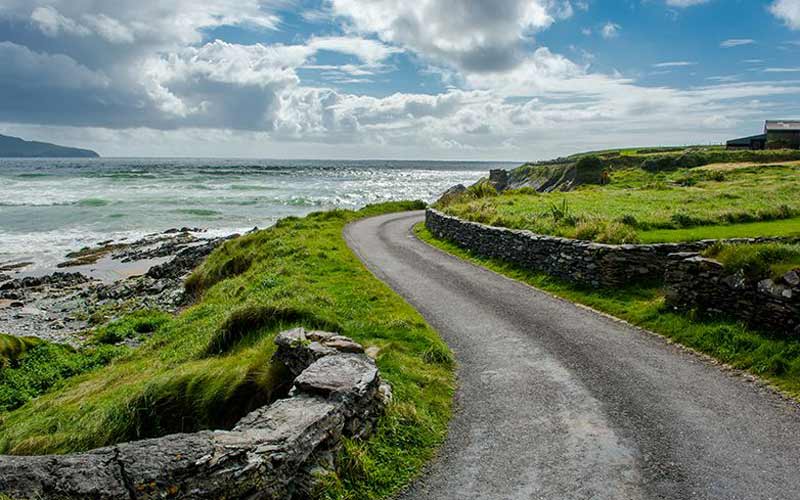
Wild Atlantic Way. Credit: iStock
The Wild Atlantic Way, which landed in 21st place, is the highest-ranking Irish destination on the list.
The 1600-mile scenic coastal route, which stretches from Donegal to Cork along Ireland’s western coast and features breathtaking sea cliffs, beaches and mountains, is one of wild, rugged beauty.
Officially launched in 2014, the route includes over 1,000 attractions, heritage sites, and discovery points, including three locations (Ring of Kerry, Connemara, Sliabh Liag) that made this list.
2. Giant’s Causeway
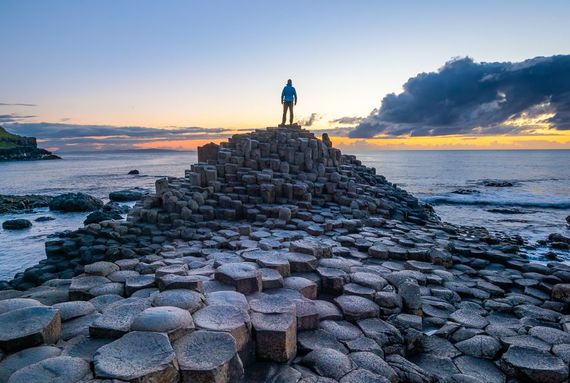
Giant's Causeway. Credit: Getty Images
The Giant's Causeway, on the Antrim coastline, is considered the most popular attraction in Northern Ireland. Pre-COVID, the spectacular and unique landscape attracted over 1 million visitors a year.
The 40,000 basalt hexagonal columns along the coastline were created by a volcanic eruption around 60 million years ago, but according to Irish mythology, the warrior-giant Fionn Mac Cumnhaill created the stepping stones as a bridge between Ireland and Scotland.
3. The Ring of Kerry
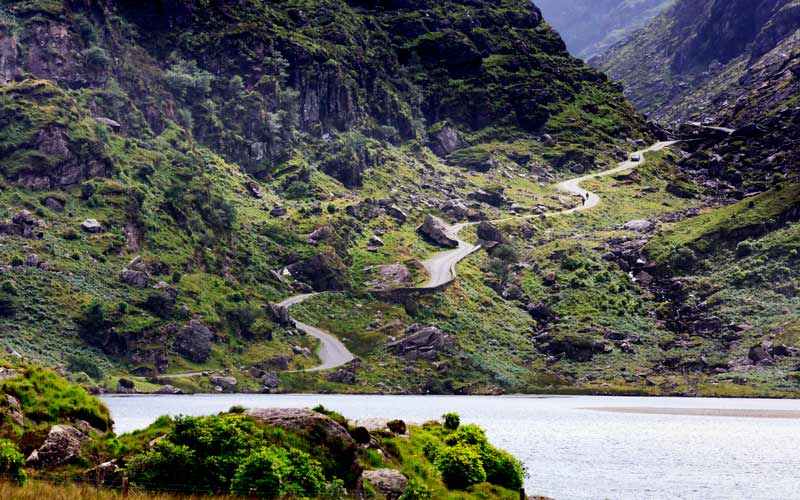
Gap of Dunloe, Ring of Kerry. Credit: Getty Images
The Ring of Kerry is a 111-mile, circular scenic drive around the Iveragh Peninsula in Co. Kerry, in the south-west Ireland.
Attractions along the iconic route, which intersects with Killarney National Park, include the Gap of Dunloe, the Ladies View, Torc Waterfall, Muckross House, Ross Castle, the Blue Pool, Skelling Michael, and more.
4. Connemara
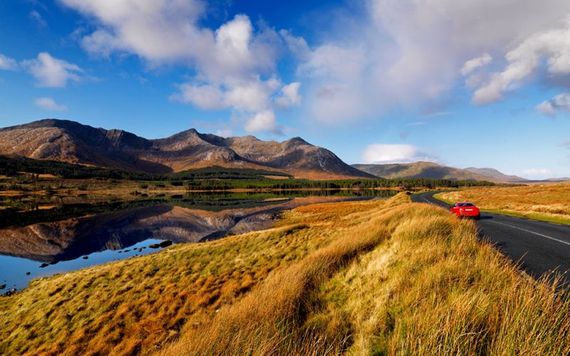
Lough Inagh, Connemara. Credit: Tourism Ireland
Connemara, located in the west of Co Galway, is a rugged but beautiful landscape of lakes, mountains and boglands. The coastline is made up of several peninsulas, and indeed, according to Lonely Planet, the name Connemara (Conamara) translates as "Inlets of the Sea."
The Sky Road is a winding scenic route located near the town of Clifden. The circular route offers breathtaking views of countryside, cliffs, and shoreline.
The picturesque Maumturk Mountains lie opposite the Twelve Bens mountain range on the other side of the Inagh Valley in the heart of the region. A network of scenic hiking and biking trails offers superb views of the countryside.
5. Brú na Bóinne
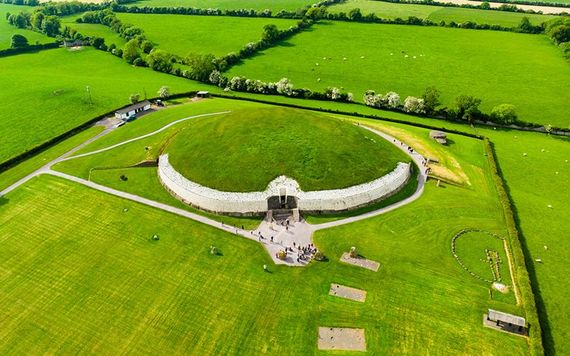
Newgrange, Co. Meath. Credit: Getty Images
Brú na Bóinne (Palace of the Boyne) in Co. Meath is home to over 90 Neolithic monuments. Designated a World Heritage Site by UNESCO in 1993, the area contains the largest collection of megalithic art in Western Europe.
Sitting within the bend of the River Boyne, it is the home to three well-known megalithic ancient passage tombs—Newgrange, Knowth, and Dowth.
Newgrange is the most famous of these. Built over 5,000 years ago, it is older than the Great Pyramid of Giza in Egypt. Every winter solstice at dawn, if conditions are right, a narrow beam of light enters the passage tomb and illuminates the chamber.
6. Sliabh Liag
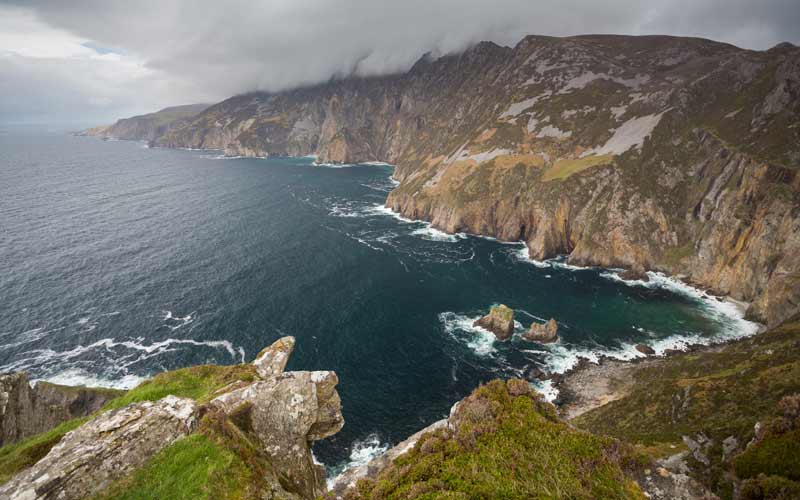
Sliabh Liag Cliffs, Co. Donegal. Credit: Getty Images
Sliabh Liag, or Slieve League, is a mountain located on the southwest coast of Co. Donegal, in the northwest of Ireland.
Bunglass, the name of the mountain's cliff face overlooking the Atlantic Ocean, offers a dramatic viewing point.
At a height of 1,972 feet, these sea cliffs are nearly three times the height of the more famous Cliffs of Moher in Co. Clare.
7. Titanic Belfast
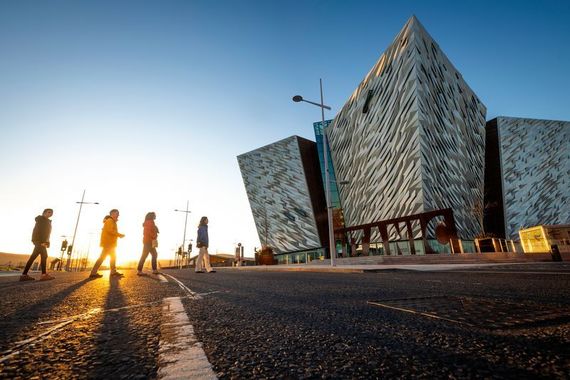
Titanic Belfast. Credit: Ireland's Content Pool
Titanic Belfast opened in 2012, marking the centenary of the ship's ill-fated maiden voyage.
The museum tells the captivating story of the Titanic, which sank on April 15, 1912, after colliding with an iceberg.
Located on the site of the former Harland & Wolff shipyard where the doomed ocean liner was built, the museum also pays homage to Belfast's maritime history.
8. Trinity College
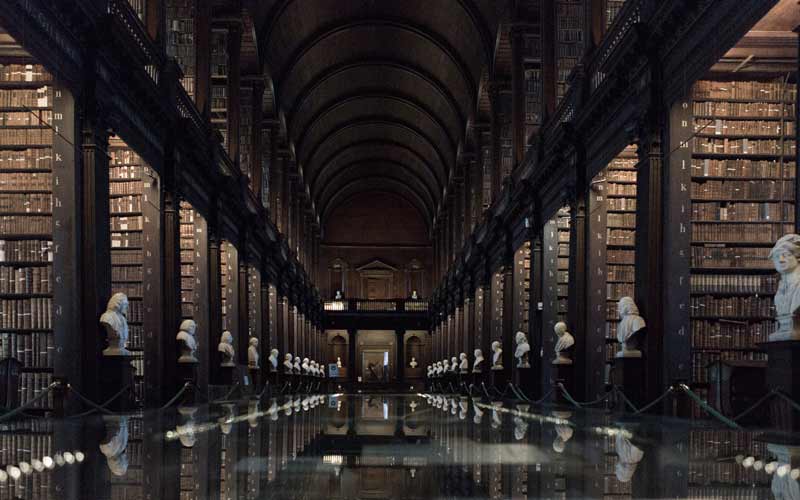
Long Room Library at Trinity College Dublin. Credit: Getty Images
Trinity College in Dublin was founded in 1592 by Queen Elizabeth I and is Ireland's oldest surviving university.
One of the most photographed spots on the campus is the Long Room in the Old Library. Built between 1712 and 1732, it holds the collection’s 200,000 oldest books, including a rare copy of the 1916 Proclamation of the Irish Republic.
However, the most famous item in the collection is the medieval illuminated manuscript known as the Book of Kells, which was added to the library in 1661.
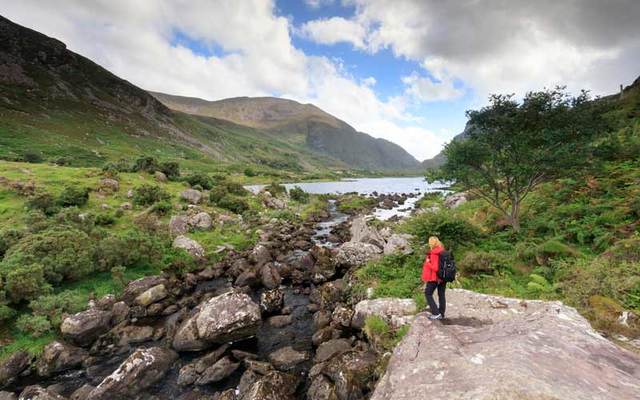


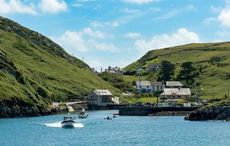
Comments